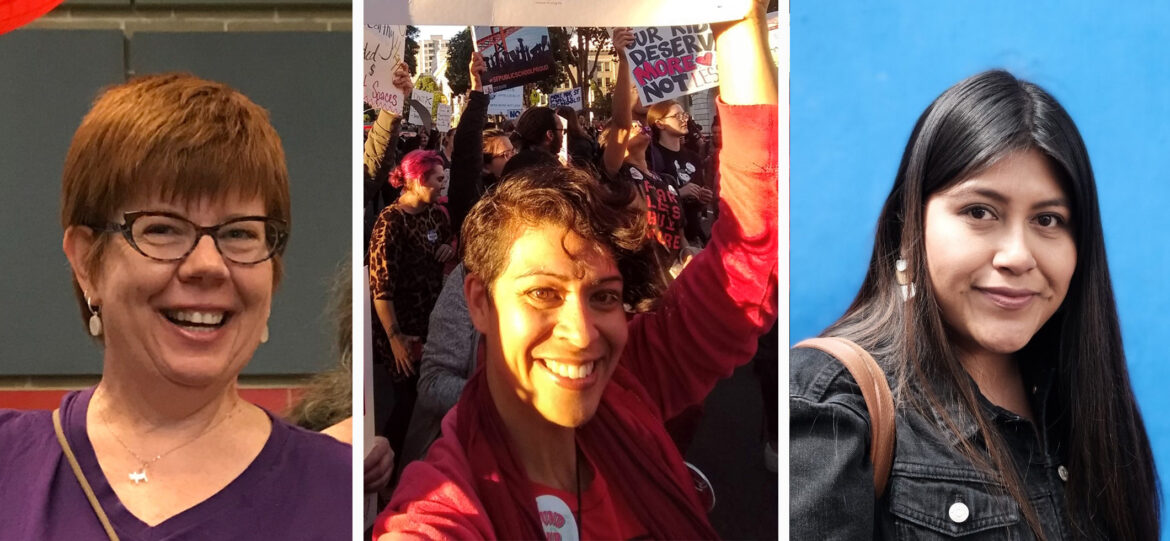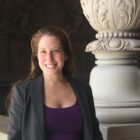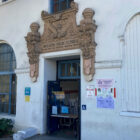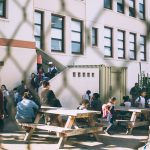San Francisco public schools are still closed, despite protests and a lawsuit pushing for them to return to in-person education as soon as possible. But there is a plan to reopen, partially and with a hybrid model. Three educators — school social worker Yajaira Cuapio, special education teacher Megan Caluza and kindergarten teacher Cathy Sullivan — weighed in on the new school schedule and talked with “Civic” about the impacts of school closures on them and the families they work with.
The new hybrid schedule, the teachers said, may still need improvement. One troubling aspect, Sullivan said, is how much time teachers will have to prepare for classes.
“We’re going to be teaching now on two separate platforms, which is both in person and distance,” she said. “And if you want to do that, well, you have to have adequate preparation time.”
Another problem the educators described is that the plan prioritizes in-person learning at the expense of students whose families have decided not to send them back to the classroom yet.
“I see it as a huge equity issue,” Cuapio said.
Online learners are only required to get 120 minutes of instruction in a school day, she added, which has led her and other instructors grappling with an ethical dilemma: Whether to advise families, who may have vulnerable seniors in the home that a student would return to, on a decision about their child’s education.
“The question is, should we persuade them to pick in-person so that I can get more time with them?” Cuapio said.
As a behavior analyst, Caluza works with teachers around the district on interventions to support students with disabilities, which means she does not have her own classroom. The hybrid model comes with some uncertainty about how she will continue to connect with students who may be returning to classrooms, or might stay online.
“I have a team of three people total providing these services across the district. And I have no directive to go on as to how I continue supporting students,” Caluza said. “I want to provide support to those who need it, regardless of their choices, in the manner that suits them the best, but I don’t know what kind of flexibility I have to provide that. I don’t know what kind of resources are available to continue serving all these children in different ways.”
Coronavirus infections and their economic fallout have hit some neighborhoods and groups particularly hard, and case rates have been disproportionately high among Black and Latino residents. The academic achievement of low-income students of color has also suffered the most under distance learning. The educators said they have seen that among those most hesitant to return to the classroom are those who have been most affected by the pandemic.
Do you have something to add to this conversation? Leave us a voice message and we may include it in a future broadcast:
“We know that these are families that are more impacted, that things aren’t easy for them, that they have a lot of complications in their lives. And these aren’t new patterns,” Caluza said. “But when we look at the fact that we are shortchanging those very families that need more, that their children need more, it is a heartbreaking sort of situation to be in.”
White, middle-class families with nuclear rather than intergenerational households who have been able to shelter in place are the ones Sullivan sees as most enthusiastic about reopening.
“I feel like they are at less risk sending their kids back,” Sullivan said. “Whereas I think families that have been more touched by the pandemic, who may work outside the home in jobs where they have contact with other people, like they may work in a grocery store or something like that, or work in a hospital, they may be less willing to send their kids back.”
Families want to see their children thrive in school, Cuapio said, but want to avoid infecting others.
“I can say that all of my families, they want to return, they have that desire, they want to see that for their children,” Cuapio said. “I have also received comments and from parents saying, ‘but Miss Yajaira, I cannot go back to my child and let them know that it was potentially my home that spread the disease or the spread the virus in the classroom. I can’t do that.”
For their part, the educators are looking forward to returning to the classroom. All three had received their first dose of the coronavirus vaccine and are scheduled for their second doses soon. Sullivan stressed the need to vaccinate and put safety measures in place for all school staff, not only educators.
“I think that those people didn’t realize that there are a lot of other people who work in schools, too. There’s the custodians, the nutritional workers, the paraprofessionals, the the bus drivers, and often the support staff. Many times we see that they are people of color, and a lot of them are over 60, and they’re in high-risk groups,” she said. “We have to protect them too. It’s not just about the teachers.”
A segment from our radio show and podcast, “Civic.” Listen at 8 a.m. and 6 p.m. Tuesdays and Thursdays at 102.5 FM in San Francisco, or online at ksfp.fm, and subscribe on Apple, Google, Spotify or Stitcher.










